Routines for Kids: Why They Work & How to Create Your Own
By nature, I like to structure my day. I don’t only prefer it, I feel like my world is crashing down around me if I don’t have a routine to follow.
I was the same way when I had my first son. Even before he came, I spent hours making schedules in Excel, color-coded and all, to help all of us get in a routine as soon as possible. Ya, I was a bit of a nut. Some of my friends would attest that not a lot has changed but they still love me.
Now, these schedules didn’t always work because you know, brand-new babies think they should have their own timelines and needs met {insert dramatic hands thrown up in the air here}.
In all seriousness though, having some kind of structure to our day did help with sleep training, squeezing playtime in, helping with soothing and more importantly, keeping me (as) sane (as the crazy new mom I was could get).
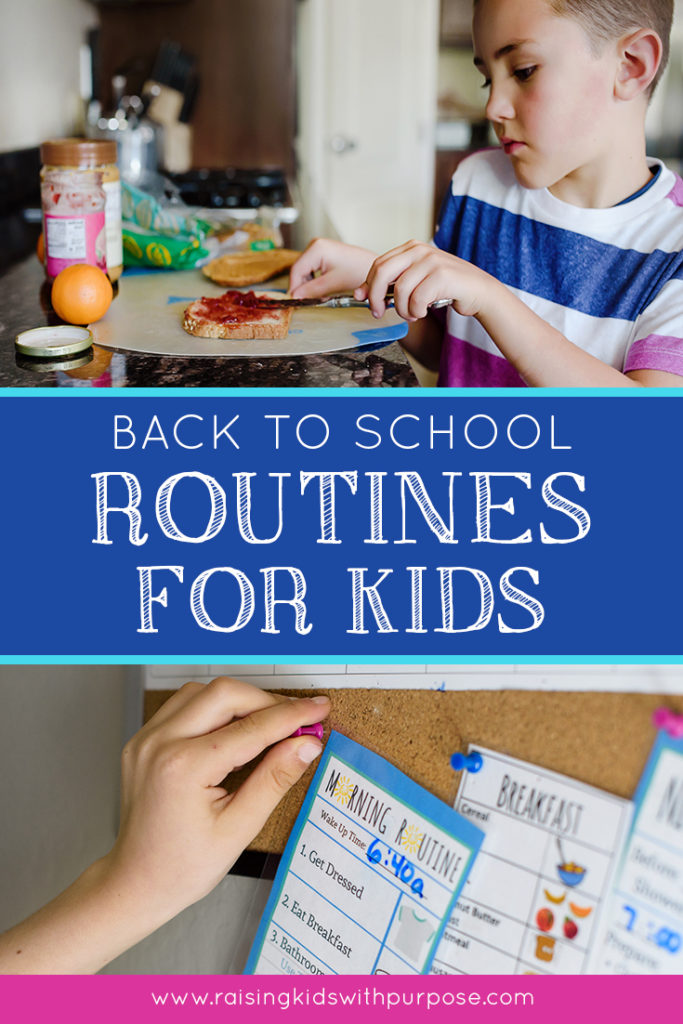
Table of Contents
Routines Are Imperative
Fast forward nine years, routines are more imperative than ever. My son has challenges with Executive Functioning with a provisional diagnosis of ADHD so he needs a routine.
Also, I have found that trying to rush out the door in the morning and making dinner are often my triggers. I go from Unikitty to Angry Kitty.
By having a routine for my kids to follow, there is a reduced amount of nagging to get things done before needing to head out the door. We get to stay on Cloud Cuckoo Land with all the rainbows and puffy clouds.
I like rainbows and puffy clouds. A lot.
What is a Routine?
When I say routine, I’m referring to some kind of consistent schedule at a certain part of the day. Mornings, after school and bedtime are the times of the day that we try to have some kind of routine, although flexible, in place.
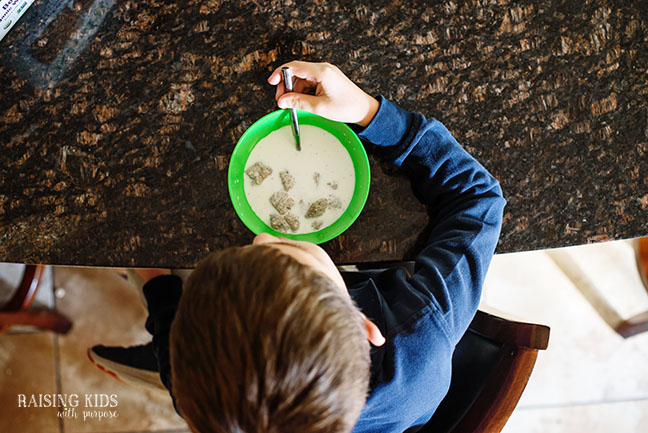
Here are daily routines that are often helpful to have:
- Morning – In my house, this is the most crucial routine we have. I am no longer involved in my boys getting ready in the morning and it’s glorious.
- After School –Is it only me or does your house feel like a circus complete with acrobats when your kids get home from school?
- Naps (if still taking them) and Bedtime
- Chore Schedules and Routines
- Play and Family Time
Because I don’t want to be more controlling than I already tend to be, we pretty much focus on having a solid morning and bedtime routine and chore schedules to allow for creativity and a little freedom.
Why Routines are Important
Routines are important for both kids and parents because they create predictability which leads to security and can aid in developing self-discipline.
There is so much change in a child’s life that having some kind of daily structure can significantly reduce stress and anxiety. Starting off the day knowing exactly what needs be done versus running around the house like your hair is on fire or you’re being chased by an angry monkey (you pick!) can set the tone for a much calmer and more productive day for you and your kids. And it feels good!
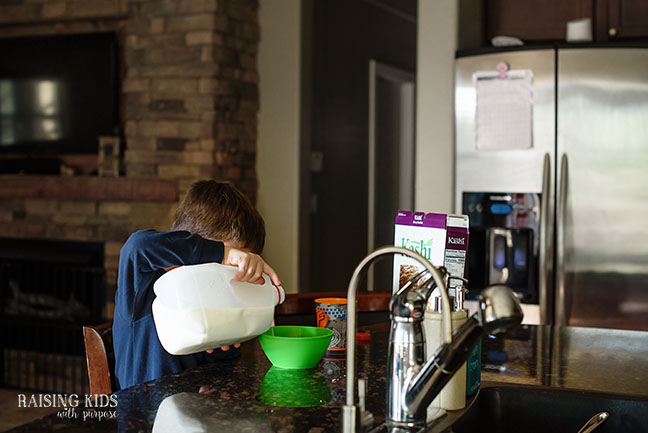
Dr. Laura Markham, author of many books I recommend and founder of Aha! Parenting says, “Structure and routines teach kids how to constructively control themselves and their environments.”
Kids who don’t have set times or places to get mundane tasks done have a tougher time learning to do the same when they are grown. Also, I can attest to not really having much of a self-care routine during my childhood (mainly because my parents working hard and not at home) which has resulted in a tougher time developing healthy habits as an adult.
“Structure and routines teach kids how to constructively control themselves and their environments.” – Dr. Laura Markham
We want our kids to thrive as adults which includes brushing their teeth, wiping their butts (I’m not even kidding), and eating healthy without being told to do so. If they are capable of creating a routine that is easy to follow, these things can be done on autopilot and without any hesitation.
The Benefits of Routines
Routines are helpful to both adults and kids and for our relationship with each other. Since implementing a morning and evening routine, I no longer turn purple from saying, “Put your shoes on” or “brush your teeth” over and over and over AND over again.
I barely have to repeat myself (even having a kid with ADHD which is a feat in itself!) which helps me treat my kids with kindness creating a stronger connection with them.
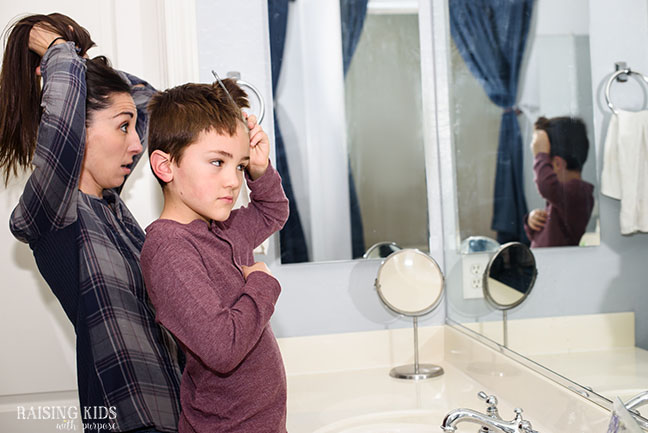
The Brain Benefits of Routines:
- Our brains become more happy by increasing certainty. | Whenever people face uncertainty, the amygdala (the responsible party for fight, flight or freeze) is engaged. Routines help us know what to expect keeping our bodies calm and more alert.
- We can think more clearly. |The prefrontal cortex (the thinker brain) houses executive functions which allow people to organize, plan, self-regulate, and get tasks done. This part of the brain tends to tire more easily if used a lot. Establishing routines helps our brain store those tasks in our basal ganglia, where our habits are stored, freeing up space in our prefrontal cortex and allowing us to have a clear mind so we can do new tasks and be creative in other areas. Wowzas! That was one heck of a run-on sentence so you may want to read it again *wink.
- Our energy levels won’t be depleted as easily. | The Ego-Depletion effect is that feeling you get after completing tasks all day long. After a long hard day, you get the feeling of wanting to curl up on the couch and watch Netflix because you use up all your limited willpower (and self-control). Having routines can conserve our self-control and energy.
- We can lose fewer things. | I love organization and to be organized but because I’m always thinking of the next thing (and probably because I have three little people with different wants all at the same time), I lose things…a lot. I can better keep track of things by putting simple routines into place. For example, hanging up my keys in the same place every day as soon as I walk into the house has helped tremendously. Now, if I could put a routine in place where I place my phone….
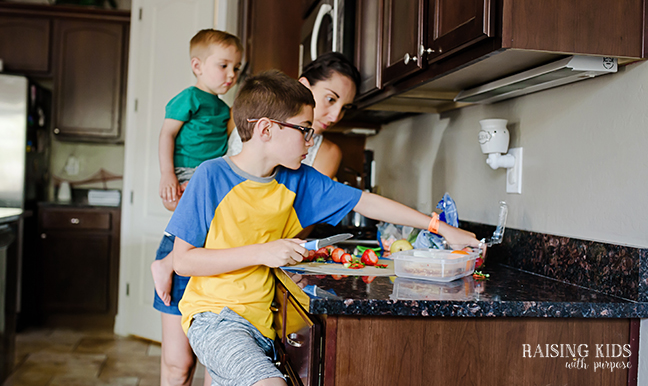
8 Benefits of Having Routines With Our Kids
Routines let your kids know what is important to you and can help minimize a lot of parent-child struggle. Also, we know that kids thrive when there is structure. Because of this, routines can have emotional, behavioral, and health benefits such as these:
- Kids are more likely to cooperate and be intrinsically motivated to do the task at hand.
- Power struggles can be eliminated or at least minimized. This runs true for our family which I mentioned above. Instead of getting into a battle on what they should be doing, I hand over their laminated routine chart and then walk away.
- Expectations can be established for kids. Routines can teach time management, teach responsibility with chores, establish healthy habits, and help your child know what to expect all the while decreasing anxiety.
- You can be more consistent in those expectations you have for your kids. Often we assume our kids know how to get themselves ready without any help which isn’t always the case. By having a routine in place (and better yet, printed out!), our expectations will be realistic.
- Confidence and independence can develop. My oldest loves being able to cook his own breakfast in the morning. His self-confidence has exploded now that he is getting closer to taking care of himself.
- Stronger connections and family bonds are created.
- Time management skills are acquired from a young age. Don’t we all wish we knew how to use our time wisely? Getting started young can develop stronger habits for the future.
- Kids experience stability and security. A predictable environment helps kids feel safe and protected especially during developmental changes such as synaptic pruning periods and puberty. Oh, puberty.
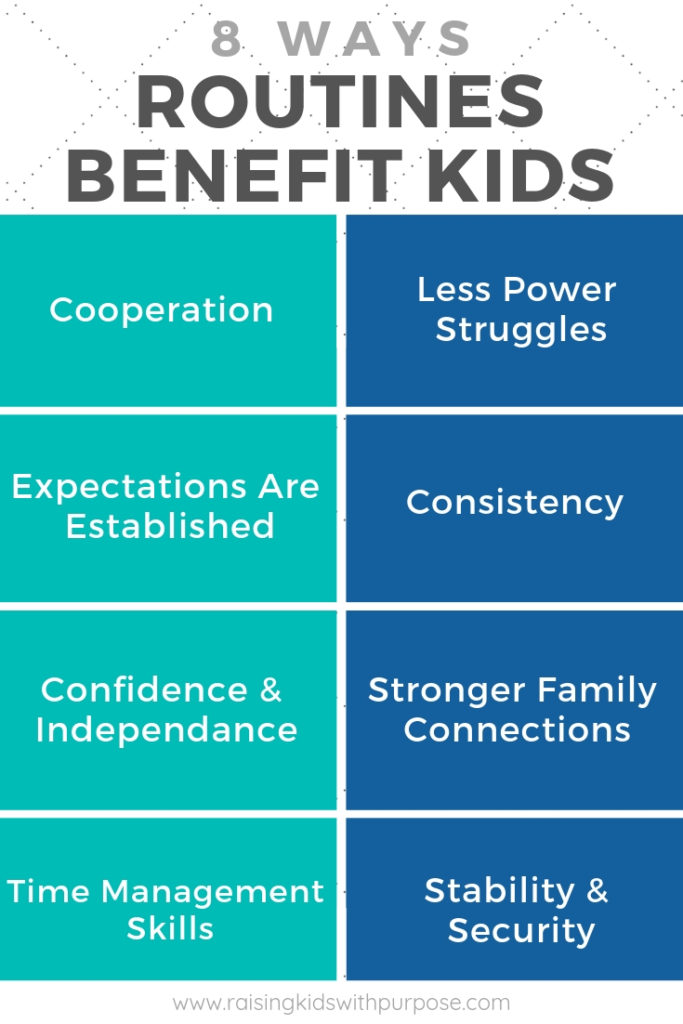
Fostering Autonomy When Creating Routines
Before I get into how to create a routine, I want to bring up the topic of autonomy. So often in parenting, by default, we have our own agendas for our kids to follow without any collaboration. We are the CEO and we treat our kids with a top-down approach.
What if we allowed them to make their own decisions with the amount of guidance they need?
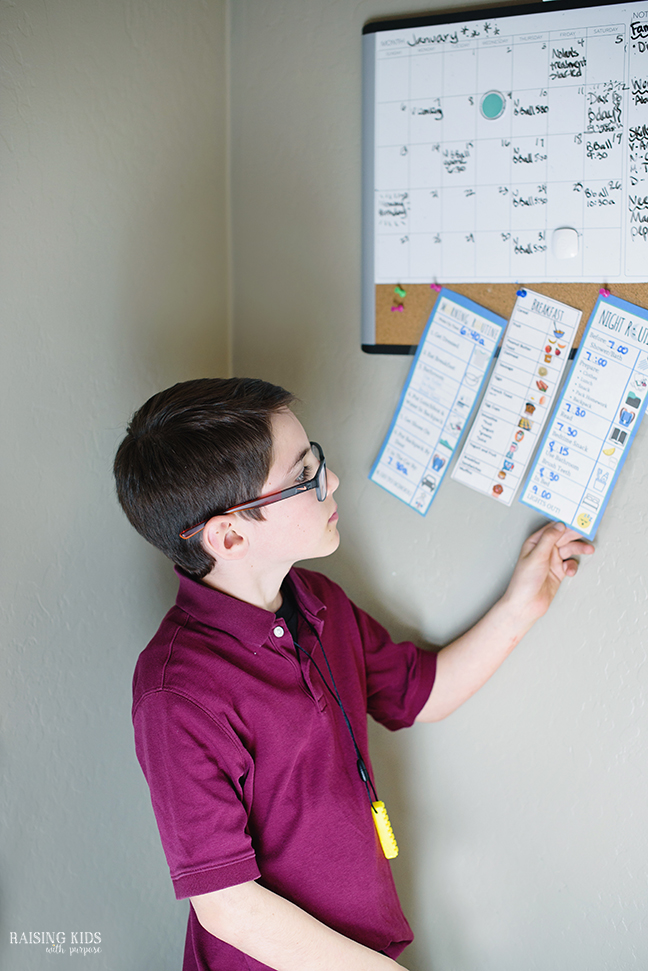
Self-determination theory is a macro theory of human motivation and personality (Gagne & Deci, 2005). It is concerned with the motivation behind the choices people make without being extrinsically motivated or rewarded.
According to Good Therapy, the self-determination theory explains the three basic psychological needs people need to fulfill:
- Autonomy, or the need to feel free to choose their own behavior
- Competence, or the need to feel capable of effectively interacting with their environment
- Relatedness, or the need to feel close to and meaningfully connected to others
I mention this because allowing your kids to create their own routines and then follow through on those themselves can develop a strong sense of autonomy. Kids are then able to develop problem-solving skills and great emotional well-being which will be beneficial for a lifetime.
When kids feel capable of making their own choices, the learning that occurs is invaluable. By doing this, kids can also realize the importance of family values, rules, and how to be a good human being.
In creating a routine, instead of handing over what you think is best, guide them carefully to choose what works for them and for the family.
Now The Fun Part, Creating Routines
For a routine to be effective, make sure it is
- Clearly planned | Everyone needs to know what role they play with a plan made AHEAD of time.
- Consistent |We have been trying to establish a routine of all hands on deck to clean the kitchen after dinner but aren’t very consistent. Therefore, the routine hasn’t been as successful as our morning and evening routines. After being consistent for a few months or so, check in with your kids and maybe change things up so it feels new again.
- Predictable | On some of our routine charts, we listed times so every day we can try to aim to do those things at the same time or at least around that time.
- Fun | Add a little fun. Our kids listed “do push-ups” as their last task of the morning. They don’t always do this but when they see it, they laugh.
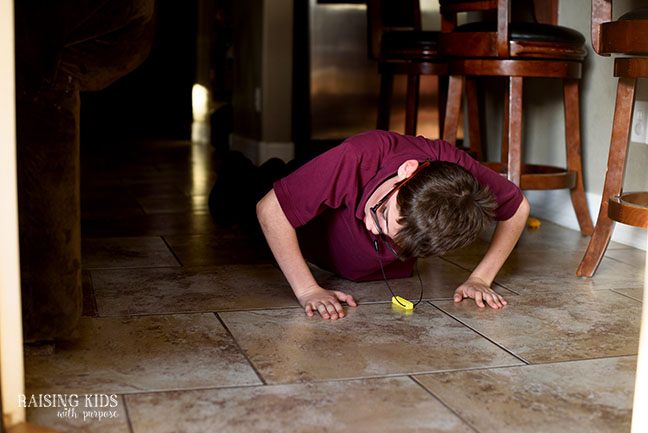
Creating a Routine Chart
As mentioned, have your child be part of creating a chart. There are a ton of pre-made charts available but they are more likely to take part if they are given the autonomy to do their own.
Ways to Create a Routine Chart
- Draw one! | My nieces talked to their mom about what should be on their morning routine chart and then drew pictures for each of the tasks. They enjoyed making a special creation that they could use daily.
- Make one on the computer | Use a program like Word and allow your kid to pick his or her own clip art.
- Use a stuffed animal or favorite toy | This is a great suggestion for kids who have sensory challenges or prefer soft things to touch. Attach the tasks to different parts of the toy that the child will follow in a specific order.
- Use a chalkboard or whiteboard| If you have a place in your home with a chalkboard or whiteboard, put the routine on there for a reference for your kids. This can easily be changed as well.
- Print out the routine chart I created for you!
Command Center Ideas:
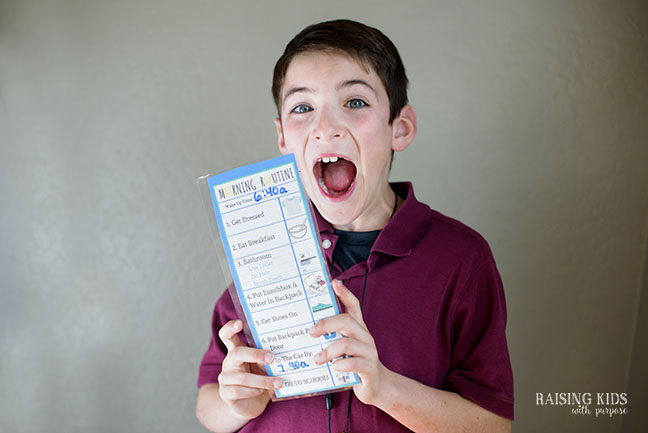
Download Free Routine Charts Including a Create-Your-Own
The routine charts are for both morning and night. I cut then laminated them so they were easy to carry around the house. When they are finished, they pin them back up on the Command Center.
I also included a Create-Your-Own. You can open it on your computer and add clip art or let your kids draw pictures!
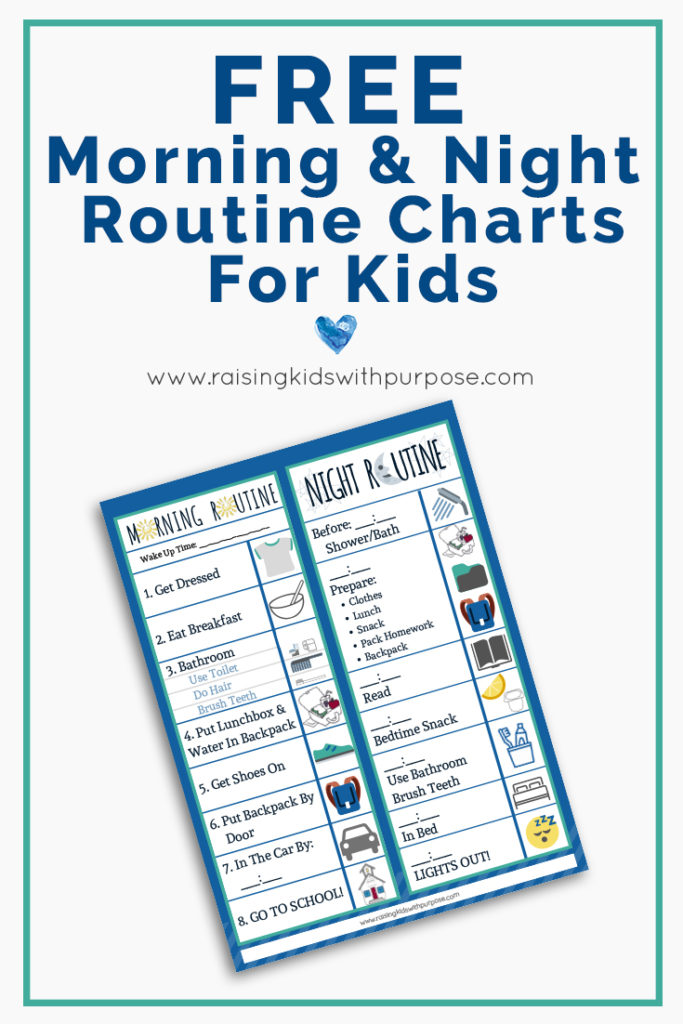
Tell me, what kind of routines do your kids use?
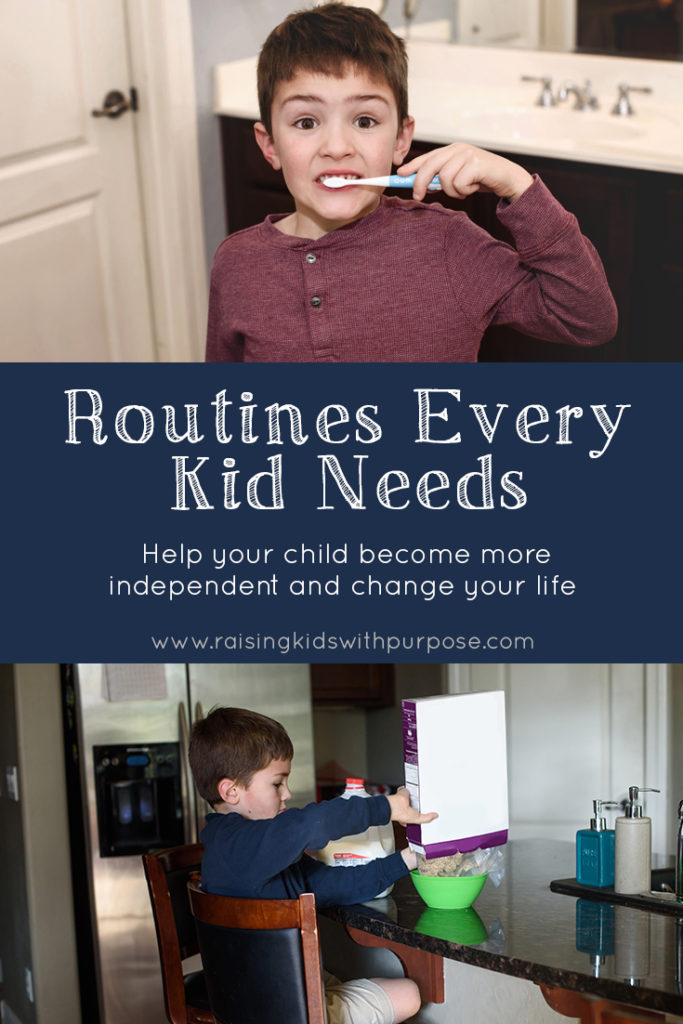

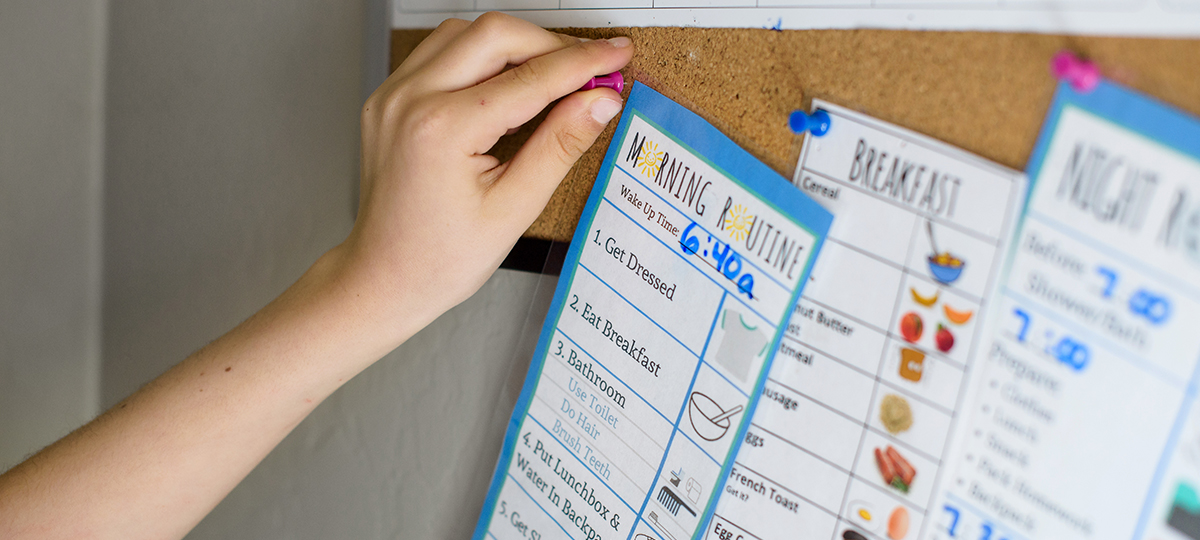

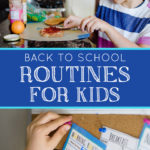
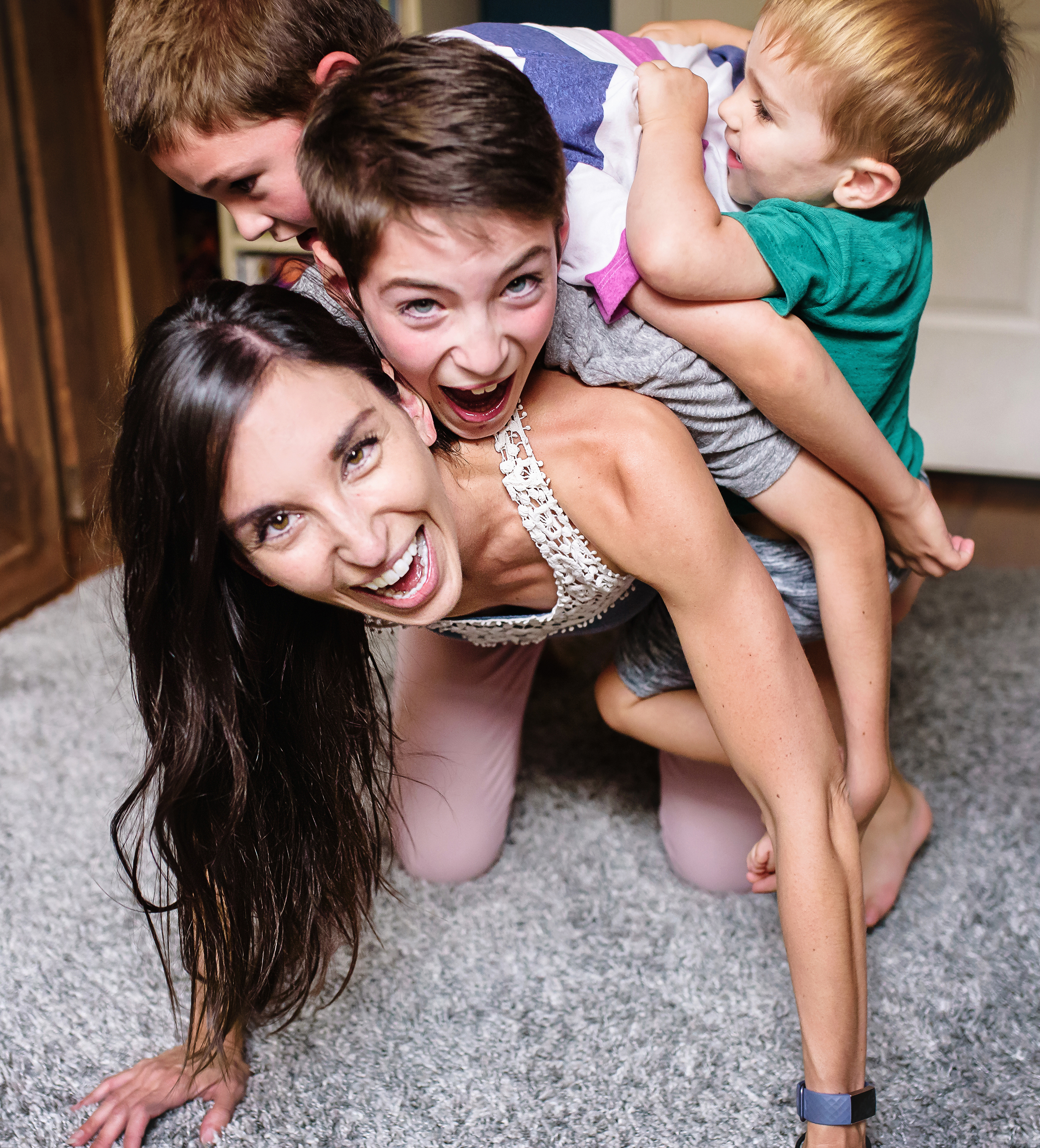
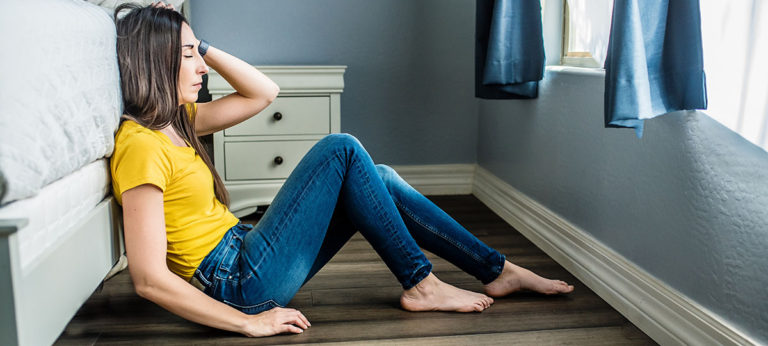

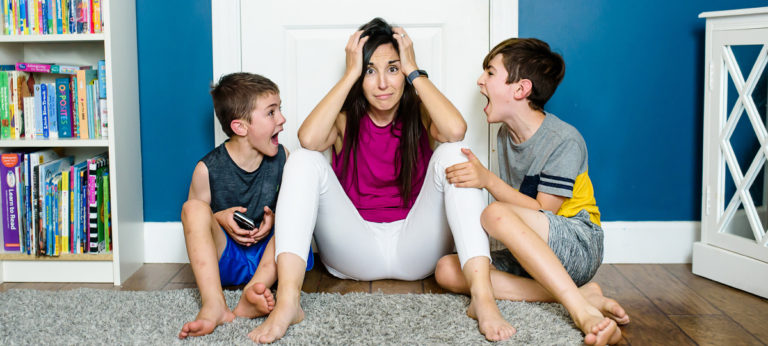
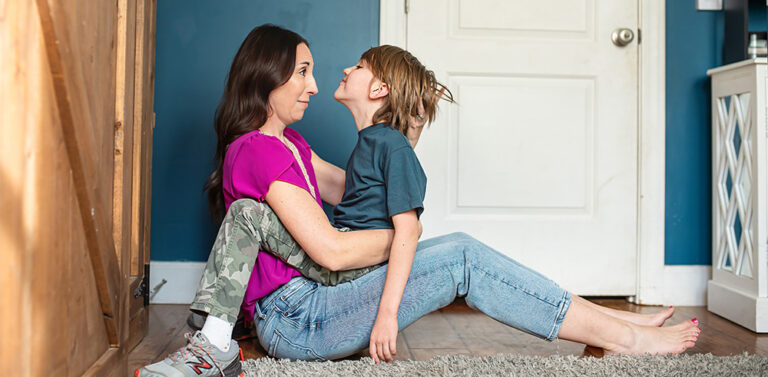
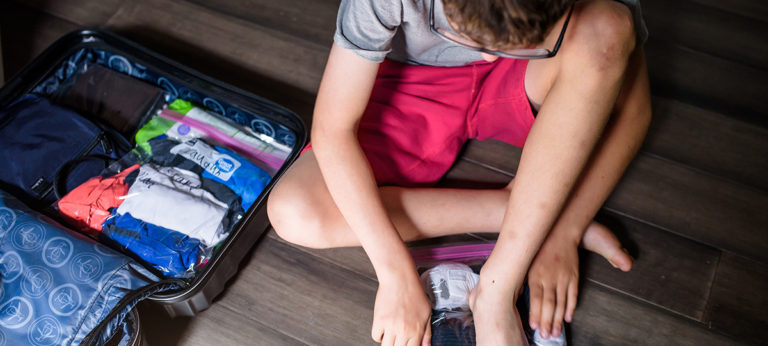
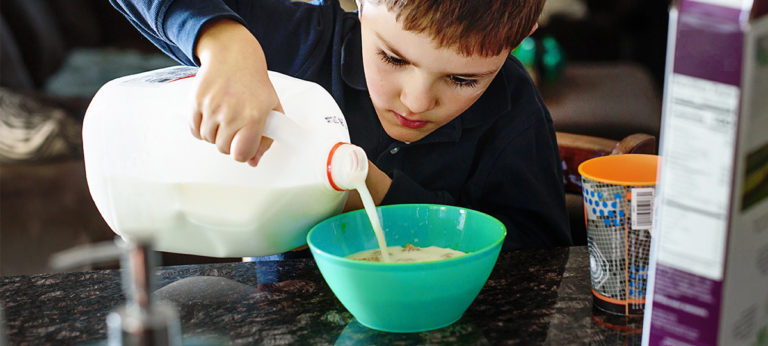
Love this! We really thrive on routine in my house ! I made a morning and bedtime routine when my son was younger but could probably use to update one ! 🙂
We have ours hanging on the command center and every once in a while I need to hand one to a child who is in La La land. LOL! Having a basic routine to follow has helped them so much!
Routines are awesome. We don’t have a strict one but we do have one that we stick to and it helps us keep everything together.
Any kind of structure helps!
I am so bad at creating my kids a daily routine, but your tips and examples, make me do it right from today.
Have your kids make their own routine! And whenever they’re not following it, just hand them their chart. It’s super easy!
Routine is always important with kids. They seem to work better when they are aware of a schedule.
They really do! We CRAVE structure!
we have a routine for our daughter and agree that it is important for kids to have one and stick to it. Sometimes after long vacations, it can be hard getting back to it.
Absolutely! That’s why I love charts so I can hand them to my kids so there’s no need to nag as they get reacclimated after vacation!